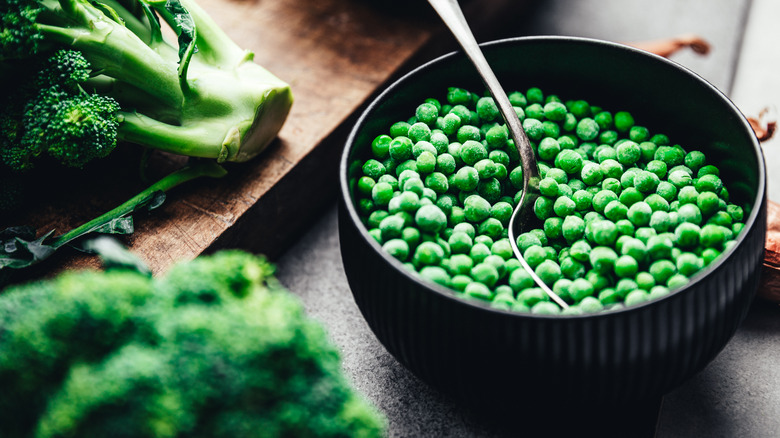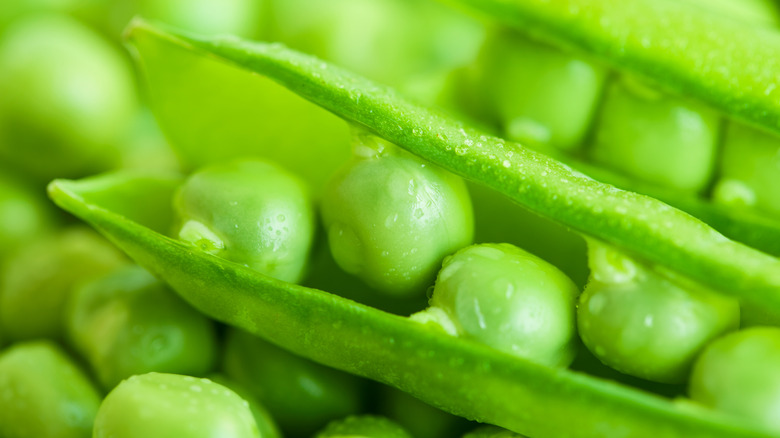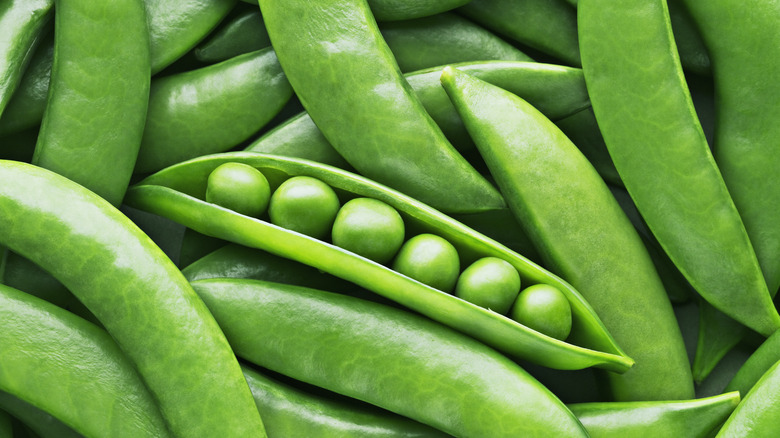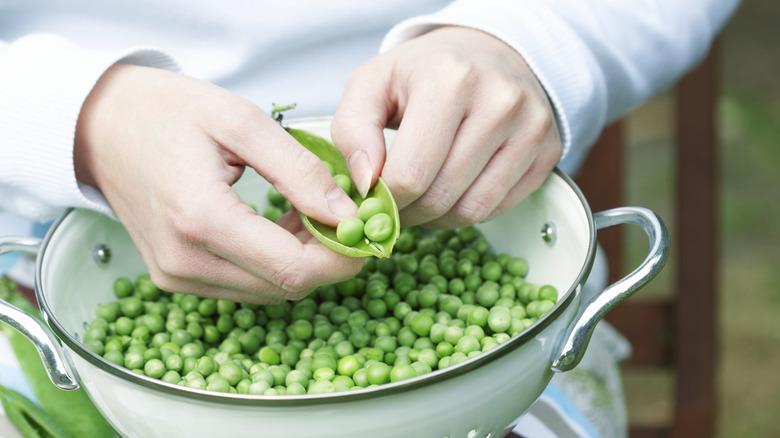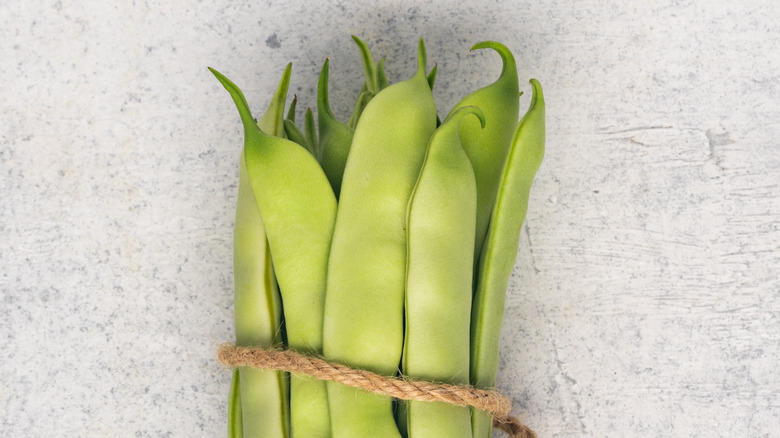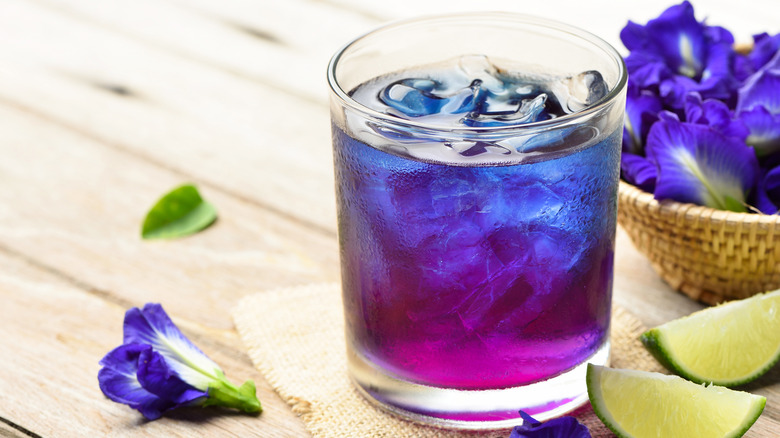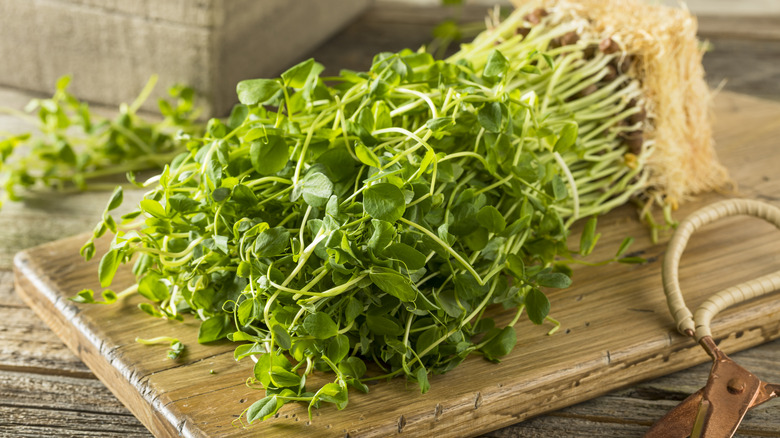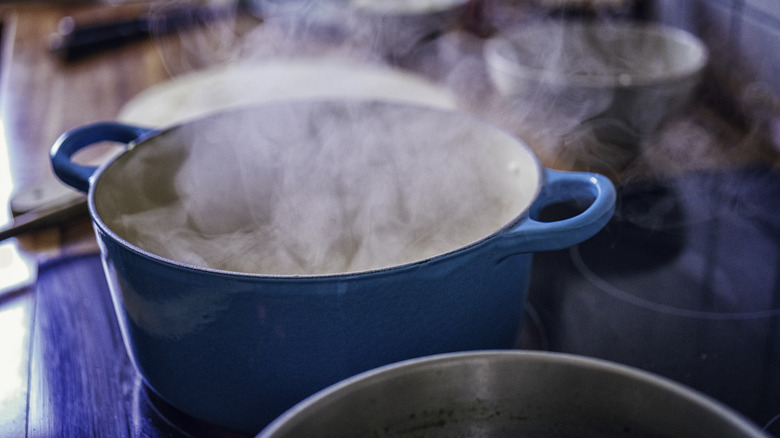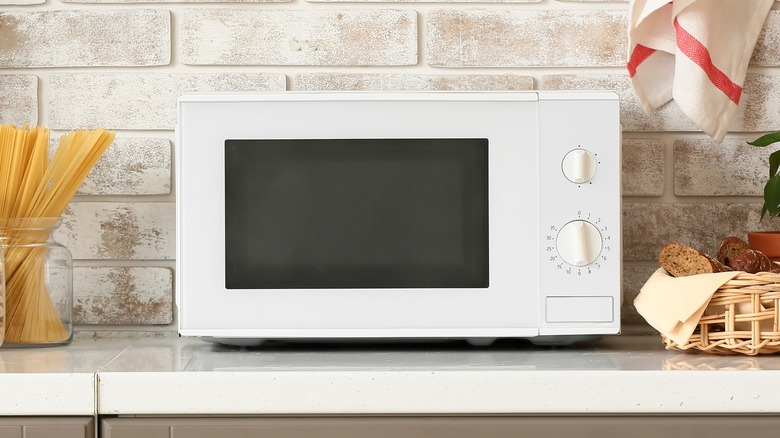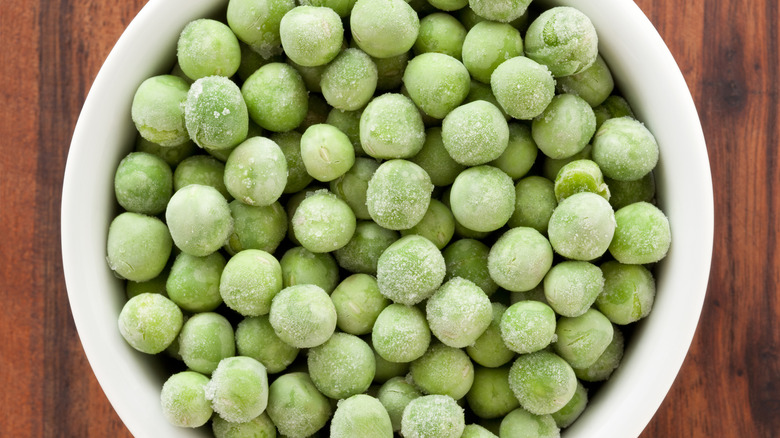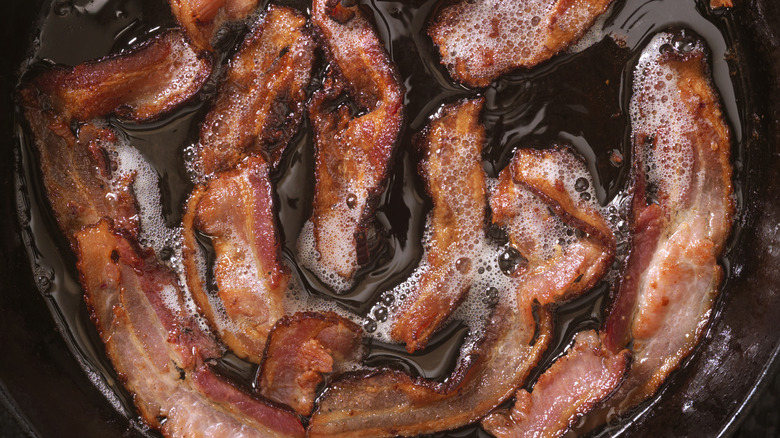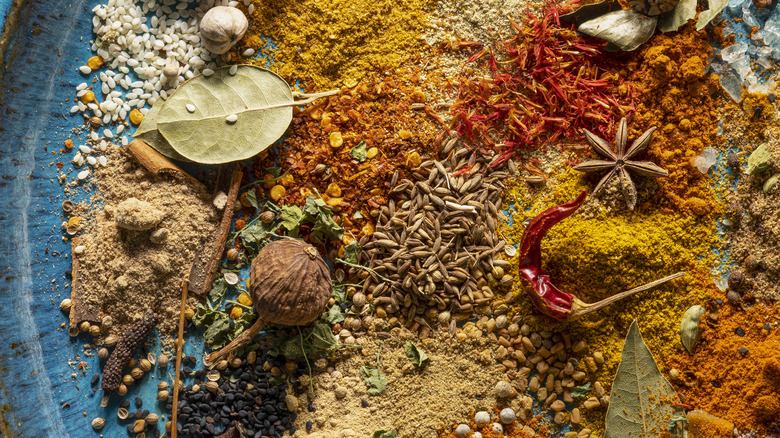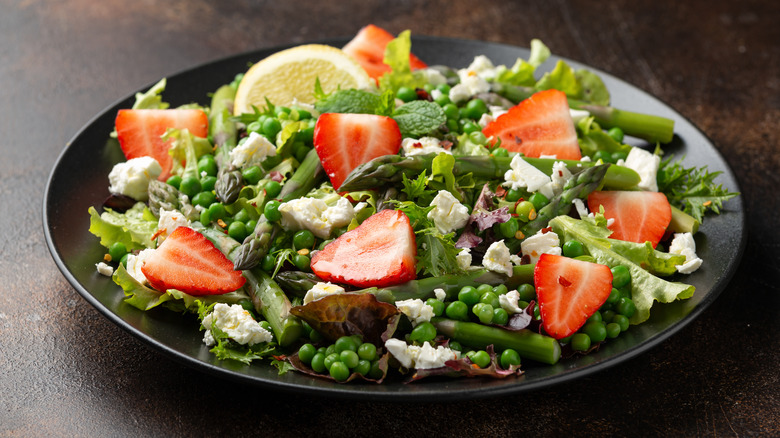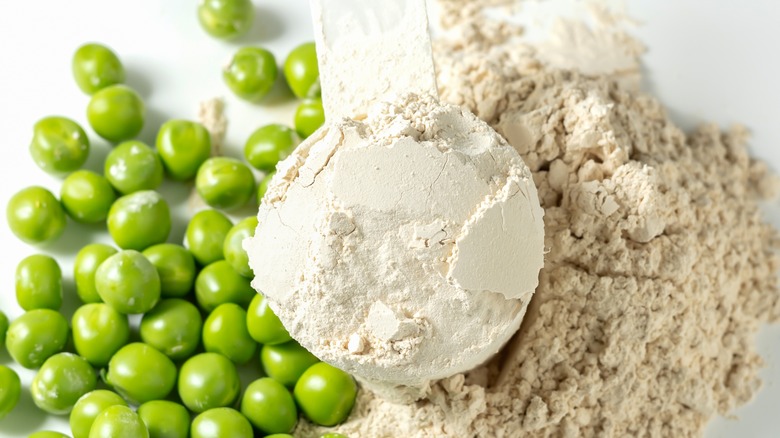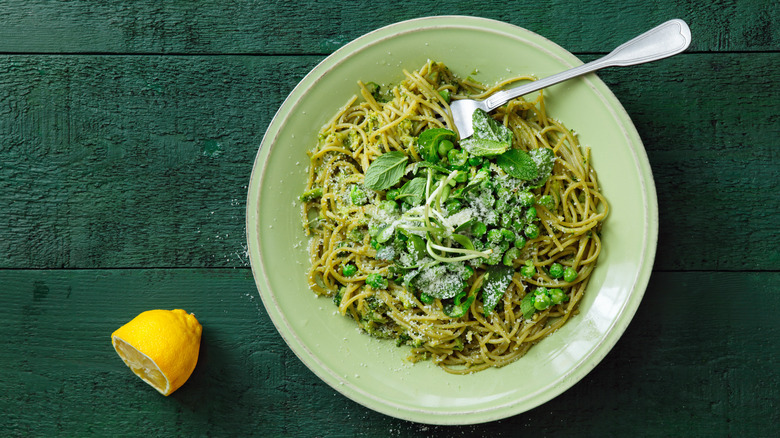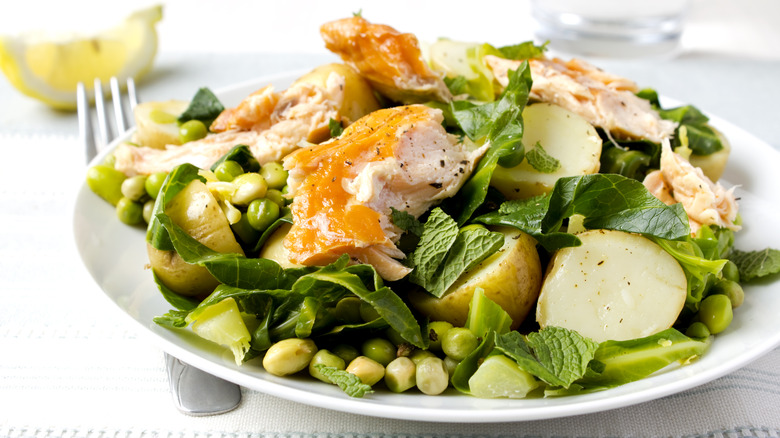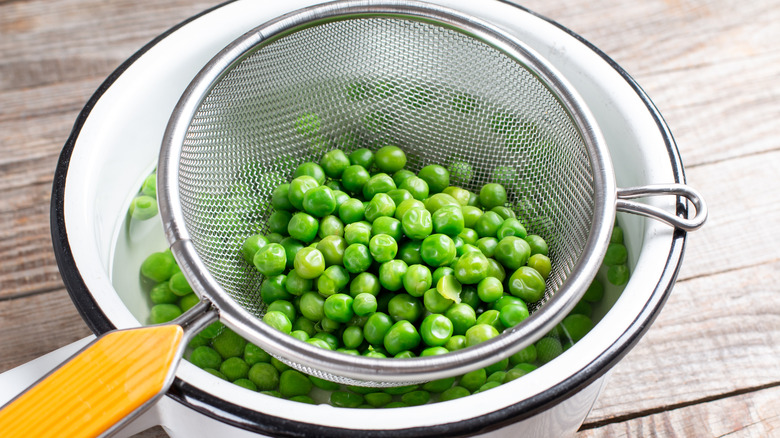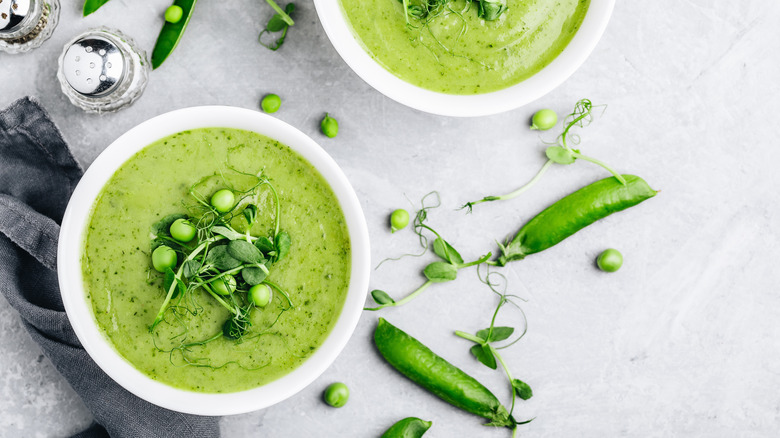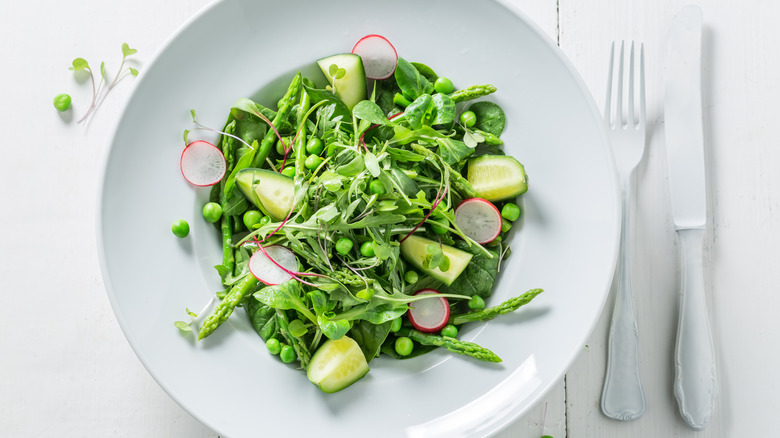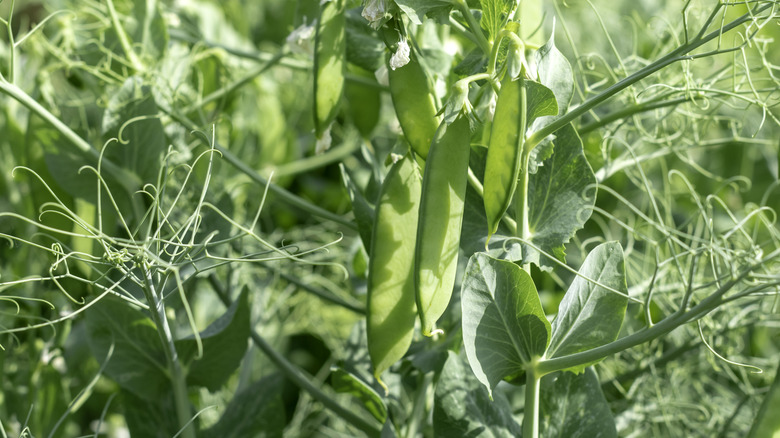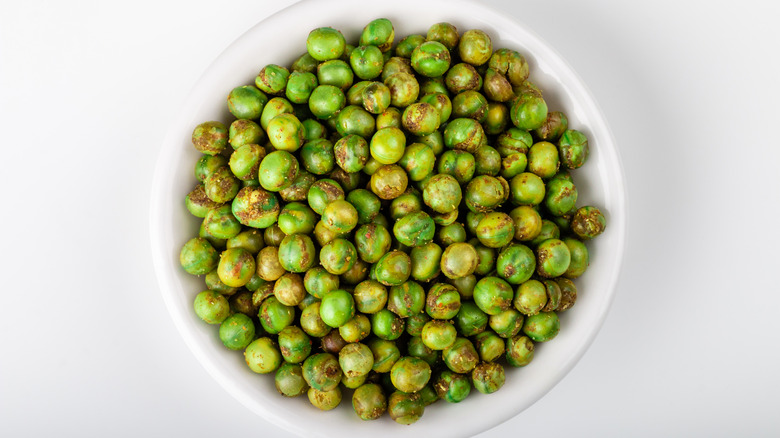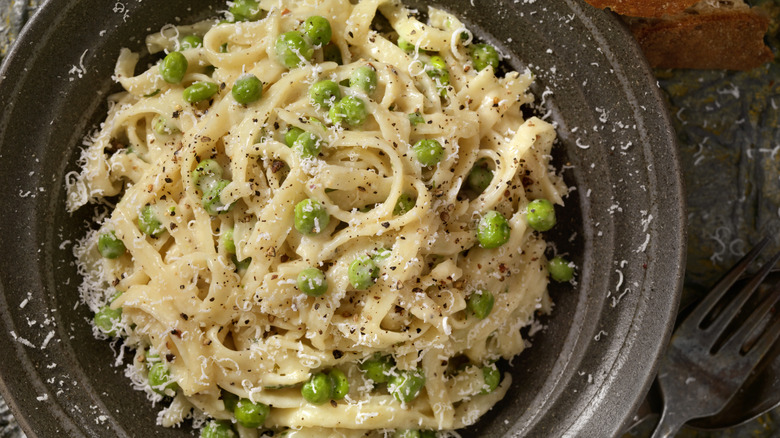21 Tips You Need When Cooking With Peas
Peas are one of America's favorite vegetables, and there's a reason. They are sweet, mild, inexpensive, and easily accessible. And let's face it; They're fun to eat. Because they are loaded with protein and other nutrients, they often make their way into a meal to act as the token green vegetable since they don't taste quite as grassy or distinctive as some other options like asparagus and Brussels sprouts. Due to their universal approval and range, they are often featured alongside varied meats, fish, and vegetables.
Peas have been an important part of the human diet and have been domesticated since between 7,000 and 6,000 B.C. They were present in most cultures' agricultural history and involved in the internal trade market. Today, we see peas in cuisines from around the world. It's hard to find a corner of the world where peas aren't grown, eaten, and loved. Everyone has their own preparation techniques, but there are some important guidelines to stick to. Let's get cooking.
1. Choose your variety wisely
When we hear the word "peas," what typically comes to mind are the little green pearls found in the freezer section of the grocery store. This is just the tip of the iceberg. Peas have quite a bit of diversity, so it's important to understand your options so you can choose a pea to fit your texture and flavor preferences and prepare them properly.
The three types of peas are snow peas, snap peas, and shelling peas, which all have their own subspecies. You may be familiar with shelling peas, which are pre-shelled. Sugar snap peas are typically eaten with their shells and are the sweetest variety, while snow peas are more tender with a flatter, thinner shell.
2. Select fresh peas
Peas taste the best when they are eaten fresh. Just hours after peas are harvested, they lose some of their flavor and sweetness. So it's ultra-important to always select the freshest peas you can find at the grocery store, farm stand, or market. There are a few basic indicators to help guide you in the right direction.
When buying fresh snow or sugar peas, remember to take note that their shells are firm. When bent, they should snap instead of fold. Snow peas will have a little more give but should still be crisp and crunchy. Next, look for even texture and coloring. Avoid peas with brown or yellow spots and wrinkly skin.
3. Remove the shell for shelling peas
If you're lucky enough to find fresh shelling peas still in their shells, then they may have a sweet, fresh, and grassy flavor. However, you have your work cut out for you, but the extra effort is worth it. There are a few simple methods you can use to remove the shells, as they are not meant to be consumed.
First, try rolling the shells between your fingertips to break up the fibers and loosen the peas. Then, you can use your finger to gently work the peas out. You can also use a sharp knife to cut off the ends and peel the shells apart with your fingers before removing the peas.
4. Peel away the strings
The shells of snap peas are a delicious and tender part of the pea that is meant to be consumed. However, they contain fibrous strings that hold the two sides of the shell together. Although they are edible, these strings can be quite chewy and unpleasant. Therefore, it's important to remove the strings before cooking.
The best way to remove the strings from snap peas is by using your thumbnail or a sharp knife to cut a little "U" shape at the top of the pea and peel it down like a zipper, catching the strings on both sides. Do this on both ends, leaving the pea string-free and ready to cook.
5. Enjoy pea flowers
If you've ever enjoyed a color-changing tea or cocktail that is bright blue or purple without the use of dyes, then you've most likely encountered butterfly pea flowers before. They can turn any beverage a vibrant blue, and when citrus is added, the color deepens to a beautiful purple. You can purchase them dried or pick them fresh.
Even if you don't wish to enliven your cocktails with this transforming flower, feel free to sprinkle pea flowers over your salads to give them a whimsical feel or use them to garnish your protein or vegetable entrees. They come in several colors, including white, purple, and pink. They are mild in flavor and perfectly edible.
6. Garnish with pea shoots and sprouts
There is much more to peas than meets the eye, especially when you take the entire plant into consideration. The whole plant is edible, from the stringy little spiraled tendrils to the leaves. When peas are just starting to sprout, they can be eaten in sprout form. Many people consume sprouts because they have concentrated nutrition and a poppy, crunchy texture.
You can eat raw pea shoots, which are more developed than sprouts. They have young yet developed leaves and look similar to little, dark green clovers. Often, you find pea shoots in salads for flavor and texture variety or used to garnish anything from soups to seafood dishes.
7. Steam them
One of the healthiest ways to cook vegetables without losing many nutrients is by steaming them. This prevents the nutrients from leaching into the water, and it is a fat-free alternative to sautéing in oil or butter. If you have a steamer basket at home, you're on the right track.
Put your steamer basket it in the bottom of a pan with enough water to cover the bottom, and crank up the heat. Place the peas in the basket and remove them as they turn deep green, which should only take a few minutes. Be sure not to overcook them to the point they become wrinkly or turn a putrid yellow-green color.
8. Use your microwave
While it's tempting to throw a serving of frozen or fresh peas in the microwave, hit the "vegetable" button, and wait for the timer to go off, this could result in starchy, chewy, overcooked peas. Instead, use a microwave steamer to achieve tender, moist peas every time.
Alternatively, heat peas up with a little butter or olive oil. This will help protect them from drying out during the microwaving process. Toss them with a spoon a few times before the timer goes off to ensure even heat distribution, and add a splash of water or vegetable broth to help the veggies retain moisture. The biggest flavor and texture downfall for peas is overcooking, so keep a close eye on them.
9. Never boil frozen peas
Did you know that most frozen vegetables are pre-cooked? They're at least blanched or parboiled, which helps them to freeze and defrost and keep their shape. That shouldn't dissuade you from buying the little green frozen veggies. There is a textural reason frozen peas are better to buy than fresh ones. They retain their moisture and fresh flavors longer than the fresh peas found in the refrigerated section.
One of the biggest mistakes everyone makes with frozen peas is overcooking them. There is a notion that boiling peas or microwaving them submerged in water will help them stay moist. However, they are at risk of becoming tough and starchy. Don't double-cook them!
10. Pair them with fat
When reheating frozen peas (or cooking peas in general), consider adding a little fat to the pan. This will protect them from drying out and add a pleasant mouthfeel. Consider using a high-quality extra virgin olive oil with a little sea salt or vegan butter as a vegan option.
Alternatively, choose a classic like salted butter, which you can add to already cooked steamed peas or brown in the pan before adding in your peas. If you're looking for a distinctive robust flavoring, choose an animal fat like bacon fat. Lamb, beef, or duck fat will have a gamier flavor and can elevate the vegetable in a unique and bold way.
11. Season your peas
In America, we often find peas served plain and boring in a cafeteria tray alongside instant mashed potatoes and some form of pale meat. We think peas deserve better. Dress them up a little with herbs, spices, and sauces. Why should every other vegetable get adorned with seasonings while peas have to fend for their own?
Season peas like you would any other mild vegetable. Tamari and garlic are a popular duo, while lemon juice and pepper seem to help the grassy flavor pop. Try a little sugar along with salt and pepper to elevate peas' natural sweet undertones, and don't forget about sage paired with butter for a rich, deep flavor.
12. Serve them with fruit
Savory vegetables and sweet fruits don't always pair well together, but peas are a notable exception. Because of their sweet flavor and starchy texture, they tend to work nicely with apricots, strawberries, and citrus. Try them raw with raw fruit or cooked with cooked fruit.
A popular way to combine peas and fruit is a refreshing summer salad. Try a strawberry salad with honey vinaigrette or a grapefruit, mint, and olive oil salad. Peas add a starchy, grassy freshness to any sweet salad and bring a varied texture as well, especially if added raw. In addition, peas are aesthetically pleasing and can provide a farm-to-table look, prompting a rejuvenating, spring-like feel.
13. Boost your smoothies with pea protein
When it comes to protein powders, our advice is to read the labels and be wary. Many are loaded with fillers and byproducts like whey, looking for a chance to be repurposed and commoditized. While we love the flavors that come with a good protein powder, we know it's entirely possible to create our own using fresh ingredients.
If you're looking to boost your protein intake and you value clean eating, consider adding pea protein to your favorite shakes and smoothies. It's relatively flavorless and packed with protein. For instance, adding one scoop of pea protein to your strawberry banana oatmeal smoothie recipe increases the protein by 15 to 20 grams (per Cleveland Clinic).
14. Blend them into a sauce or spread
While it's difficult to stray from the pleasing crunchy texture of green peas (in or out of their pods), consider blending them to make an incredible sauce or spread. Because peas are quite starchy when blended, they become smooth and bulky, similar to the texture of blended tofu or the consistency of smooth ricotta. Peas can be transformed into vegan ricotta when blended with cashews, firm tofu, lemon juice, garlic, and sea salt.
Add peas to your pesto to bulk up your sauce. Simply add raw peas as your first ingredient before blending with your basil, olive oil, pine nuts, garlic, and other ingredients. You can also use peas to replace nuts in pesto altogether.
15. Pair with protein
Peas are delicate, mild, and sweet, making them incredibly versatile and easy to pair with just about any protein. This includes seafood, beef, poultry, and vegetarian proteins like tofu and tempeh. Because peas are so mellow, they can be an especially good addition to recipes that feature white meats and seafood and won't overpower the subtle flavors.
If you're stumped about where to get started, try a grilled salmon with watercress and pea salad recipe. Better yet, simmer peas in lemon butter sauce for chicken. On the flip side, ever tried shepherd's pie before? This dish is proof that peas and proteins (no matter how gamey) are meant to be served together.
16. Lightly blanch fresh peas
Of course, cooking with fresh peas takes more effort than simply busting open a bag of frozen stuff. There's nothing better than a fresh pea, especially when newly picked or purchased from a farm stand that harvests their food daily. Once the peas are shelled and rinsed, a great way to lightly cook them is blanching.
Add them to boiling water for about one or two minutes (three minutes, maximum). You'll want to remove them the second they turn deep green. Remember, you cannot undercook peas, as they are quite enjoyable raw, but it's very easy to overcook them. Remove from the heat and rinse them immediately or let them cool.
17. Use them in soups
While split peas dominate pea-soup recipes, there are plenty of other ways to incorporate your favorite vegetable into soups, bisques, and stews. Firstly, when cooked down or blended, they can become a starchy mess, which, in this case, can benefit a thin soup. The starchy texture of the cooked and blended peas can thicken the soup without altering the overall flavor too much.
Alternatively, leave your peas whole. Add them to a vegetable or protein-based soup at the last minute so they don't overcook. This will give your soup pops of texture and a nice aesthetic. Try a refreshing, healthy green soup with spinach, peas, and mint, or add peas to your favorite go-to winter soup.
18. Enjoy raw peas in salads
Some vegetables don't have the range to be eaten raw. Think eggplant, asparagus, and potatoes. Nobody would want to bite into that bitter, stringy, or even potentially dangerous mess. On the other hand, peas are delicious when eaten raw. They are crunchy, watery, starchy, and sweet.
Use raw peas in salads. They have a slightly grassier flavor than cooked peas and complement both light, tender, leafy greens and dark, sturdier greens. Don't forget to add nuts, fruits, and sweet root vegetables like beets, onions, and carrots. Consider a light and citrusy vinaigrette to complement but not overpower the mellow vegetable and to avoid masking its aesthetic appeal with a thick or creamy dressing.
19. Stir-fry pea tips
If you grow fresh peas in your backyard garden, there is a special tip you need for cooking them. Pea tips are the little leaves that grow from the pea plant and can be harvested along with the peas. If you don't have your own vegetable garden, you can often find them at Asian grocery stores. However, they are slowly gaining popularity in the foodie community, so keep your eyes peeled.
Add pea tips to your stir fry towards the end, as with any other leafy green. They have a fresh, sweet flavor and, when cooked, have a similar texture to spinach. They work well in stir fries because the sauce clings to them beautifully.
20. Roast peas for extra texture and flavor
Although the soft texture of cooked peas is appealing, who doesn't love biting into a crunchy roasted vegetable? Roasted peas, especially when seasoned properly, can add crispy texture and flavor to almost any dish without pulling out the deep fryer. Simply douse your peas in oil and seasonings such as garlic powder, paprika, and sea salt, and roast them on a lined baking sheet in the oven at a high temperature.
Keep a close eye on them, as they will cook rather quickly because of their small size. Just when they begin to brown, pull them out and sprinkle them on top of any dish. They will be starchy, crunchy, crispy, and delicious.
21. Mix peas into your pasta
A classic dish like pasta carbonara that includes peas, along with cream sauce and pancetta, is a great example of how starchy foods can go together like peas in a... Well, you get our drift. Pasta, cooked al dente, in combination with a buttery rich sauce, can benefit from the sweet pops of green, starchy goodness. Green vegetables provide contrast to the dense, rich mouthfeel that heavy cream sauces can carry.
Even if you're making pasta marinara, peas can highlight the sweetness of the tomatoes and add a mellow grassiness to contrast grated parmesan or melted mozzarella. For a change of pace, consider peas in your next pasta dish or casserole.
